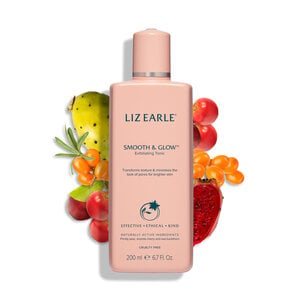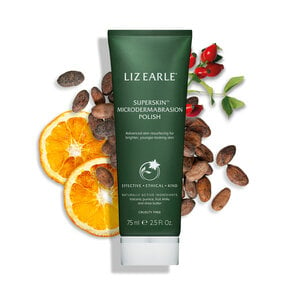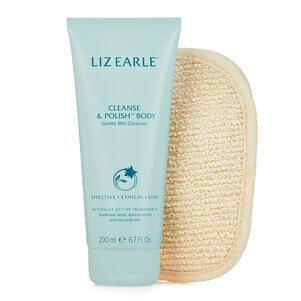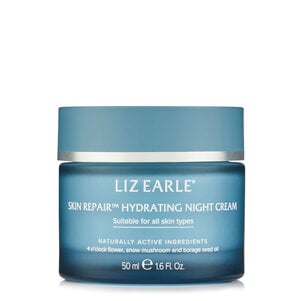
Unlocking radiance: The benefits of exfoliating your skin
May 8, 2024
3 min read
Looking to get a more glowing, healthy-looking complexion? It’s time to get better acquainted with exfoliation. Often overlooked in people’s skincare routines, exfoliating your skin can have transformative benefits for both your face and body. This simple addition to your regime can result in skin that feels smoother, looks brighter and is a better base for the rest of your skincare products and your make-up.
So, what does it mean to exfoliate, what does an exfoliating scrub actually do and what are the benefits of exfoliating?
Exfoliation: A fundamental skincare ritual
Simply put, exfoliation is the practice of removing dead skin cells from the surface of the skin. There’s a few different methods of achieving this, but the most popular skincare products for exfoliation are mechanical exfoliators, such as scrubs or polishes, or a chemical exfoliator that uses alpha hydroxy acids (AHAs) or beta hydroxy acids (BHAs). The benefits of exfoliating your skin include:Revealing more radiant skin:
One of the most immediate benefits of exfoliation is how it can visibly reveal a brighter, more radiant complexion, and helps reduce the appearance of uneven skin tone. As dead skin cells settle on the surface of our skin, sloughing them away with an exfoliator (along with any other dirt, make-up or debris left on the skin) will instantly give skin a more luminous look.Exfoliation can also help reduce the appearance of uneven skin tone by help fading the look of dark spots, hyperpigmentation, and uneven patches, as it encourages a more regular cell turnover (your skin’s ability to shed old cells and create new ones) This can be particularly beneficial for people who have visible signs of sun damage, blemishes or post-inflammatory hyperpigmentation.

Improving skin texture:
Removing those dead skin cells doesn’t just do wonders for your skin tone. If you can implement exfoliating as a regular step in your skincare routine, this can significantly improve the texture of your skin, too. Whilst it removes the dead skin cells and excess oils, your exfoliator will also be working to unclog your pores and refine the skin’s texture, resulting in skin that feels smoother, softer and much more supple to the touch.
Enhancing product absorption:
By creating a clean canvas, any other product you use on your facial skin is more likely to penetrate your skin’s barrier more effectively. You may notice that any serums, moisturisers or other beauty treatments you try are able to absorb more deeply into the skin, and in turn, this helps maximises their efficacy. Plus, if you like to wear make-up, you may find base products like foundation blend out to create a more even application.
Preventing breakouts and congestion:
As regular exfoliation helps keep pores appear clear of debris and excess oils, this can help prevent the appearance of breakouts and issues with congestion – this means a smaller likelihood the appearance of blemishes, blackheads or whiteheads.Which exfoliator is right for my skin?
The product you choose to exfoliate your face will likely depend on your skin type. Most people with dry, sensitive skin, or that are blemish-prone, find that using a mild chemical exfoliator is best, like our Smooth & Glow™ Exfoliating Tonic. People with an oilier skin type might prefer to use a stronger chemical exfoliator or a mechanical exfoliator, like our Superskin Microdermabrasion Polish that combines both fruit AHAs and volcanic pumice to instantly brighten and smooth while boosting surface skin cell renewal.When it comes to choosing a body exfoliator, you can use a specially formulated body exfoliator product, like a body scrub, or try an exfoliating tool like a mitt or sponge. The benefits of scrubbing your body are similar to those of exfoliating your face, plus you may find your arms and legs feel much softer to the touch. Our Cleanse & Polish Body Gentle Mitt Cleanser is suitable for all skin types, but remember to use short, light strokes. Being too heavy-handed when using an exfoliating tool could result in micro tears on the skin, which is unnecessary damage you would like to avoid.


How much exfoliation is the right amount?
Exfoliation is undoubtedly a beneficial skincare practice when done correctly and regularly. But it’s important to make sure you’re exfoliating the right way, as over exfoliating the skin can have negative effects on your skin’s and may even undo all of the benefits you’re looking to gain by exfoliating in the first place.When it comes to using both physical or mechanical exfoliators, it’s best to begin by exfoliating both your face and body twice a week. This is all you need to effectively remove any build-up of dead skin cells without compromising your skin’s barrier. Overuse of a physical or mechanical exfoliator can leave skin looking red or feeling irritated and this may take some time to soothe.
Similarly, less is more when it comes to using chemical exfoliators too. Both AHAs and BHAs are strong skincare ingredients that, when used incorrectly, can damage your skin’s natural moisture barrier and lead to skin feeling sensitive and irritated or even blemishes appearing. When you first start using a chemical exfoliator, test it out by trying it once a week. If you think your skin has reacted well to the product, you can slowly up this to twice a week or three times a week. Some formulas, like our Smooth & Glow™ Exfoliating Tonic, are also gentle enough to use daily.
If you’re introducing an exfoliator into your regime for the first time, be mindful that they can make your skin feel more sensitive to the sun’s UVA and UVB rays – removing the outer layer of dead skin cells mean the sun can penetrate more deeply into your skin’s layers, so a product with an SPF of at least 30 is recommended to be used alongside any exfoliator. Keep on top of your moisture levels too by investing in a nourishing night cream, like our Skin Repair™ Hydrating Night Cream, will help lock in extra hydration to boost your radiance even more.
SHOP THE PRODUCTS






